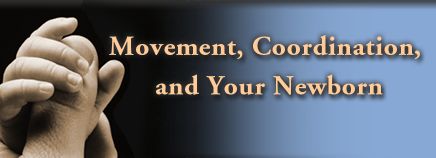
Babies are born with certain reflexes. They respond naturally to stimuli like light or touch in certain ways — if you put your finger in your newborn’s hand, for example, the baby probably will automatically take hold of it. If you lightly touch around the baby’s mouth, he or she will likely make a sucking motion.
A Newborn’s Reflexes
Babies usually display rooting, sucking, startle, grasp, and tonic neck reflexes soon after birth. These movements are a normal part of their development, and they gradually disappear as babies mature, usually by the time they are 3 to 6 months old.
The rooting and sucking reflexes help a a newborn get nourishment. Rooting prompts an infant to automatically turn in the direction of a food source, whether that’s a breast or a bottle. You may be able to evoke this response if you gently stroke your newborn’s cheek near the mouth with your hand. Your infant will turn in that direction, mouth open, ready to suck. When an object, such as a breast or a bottle nipple, is placed in the baby’s mouth, the baby will reflexively begin to suck.
A baby is also born with a startle response called the Moro reflex. An infant who is startled (for example, by a loud noise) or abruptly moved may respond by throwing out his or her arms and legs and curling them in again.
Your baby also may show a grasp reflex by taking hold of your finger when you place it in his or her palm. If you touch the sole of your newborn’s foot, it will flex and the toes will curl.
A baby will also likely show the tonic neck reflex, or fencer’s pose. This is when a newborn’s head is turned to one side and the infant automatically straightens the arm on that side of the body while bending the opposite arm.
Encouraging Your Baby’s Movements
As your baby grows and gains more control over movements, these reflexes will become less noticeable, less jerky, and more purposeful.
Give your infant enough space to stretch and move the arms and legs, as these movements can help strengthen and tone muscles.
It’s also important to give your newborn a chance to turn and lift the head. When you do this, make sure to support the head and neck while holding your baby.
Also, never leave your little one unattended, especially on high surfaces such as a changing table or bed. Even newborns can unexpectedly roll or scoot over to the edge.
When to Talk to Your Doctor
Your baby’s doctor will check these reflexes as part of your baby’s routine physical examinations, making sure they’re present and the same on both sides, and taking note of when they disappear.
Be sure to discuss any concerns about your baby’s movements with your doctor.

